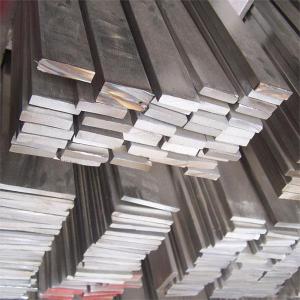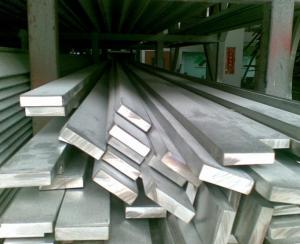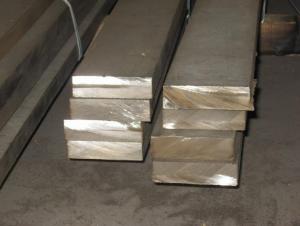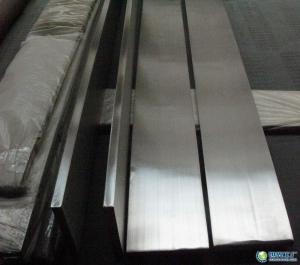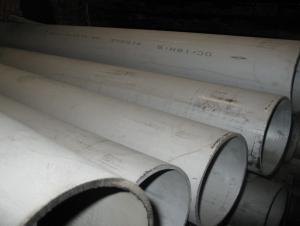Stainless Steel Flats
- Loading Port:
- Shanghai Port or Others
- Payment Terms:
- TT or LC
- Min Order Qty:
- 5 Tons m.t.
- Supply Capability:
- 1000 Tons Per Month m.t./month
OKorder Service Pledge
OKorder Financial Service
You Might Also Like
Stainless Steel Flats
1. Standard: AISI, GB, JIS, ASTM, DIN, EN
2. Grade: 1).200Series: 201,202.
2).300Series: 301,302,303,304,304L,316,316L,321.
3).400Series: 410,410S,416,420,430,430F.
3. Size:3x25mm- 80x250mm
4. Length: 2m-6m
5. Craft: HRAP, or cold drawn
6. Stainless Steel Flat Bar Surface: Pickling or polished
7. MOQ: 1000kg
8. Delivery: within 20 days
9. Package: Waterproof with tape
10. Application: These products are widely supplied to areas of machine-made industry, chemical industry, shipping industry,architecture, food industry, household products etc.
|
Name |
Stainless Steel Flat Bar | ||||||||
|
Material |
201.202.301.304.304L,304N,304LN, 309S,310S,316,316L, 316Ti,316N,316LN,317,317L,347, 347H,etc. | ||||||||
|
Standard |
JIS/AISI/ ASTM,/GB,/DIN,/EN/SUS.etc. | ||||||||
Shape |
Stainless steel Round/flat/square/angle/hexagonal bar | ||||||||
Price term |
FOB/CIF/CNF or as required | ||||||||
|
Length |
6m,5.8m,4m as required | ||||||||
|
Application |
kitchen and sanitary wares , and Structural use high strength components,furniture handles , handrails , electroplating and electrolyzing pendants , foods, electron , petroleum , construction and decoration , etc | ||||||||
|
Payment terms |
L/C,T/T,Western Union,or as required. | ||||||||
|
MOQ |
As required | ||||||||
|
Packing |
Export standard package | ||||||||
|
Certificate |
ISO/SGS | ||||||||
|
Contact |
If you are interested in our products,please feel free to contact me. Cherryliu@okorder.com |
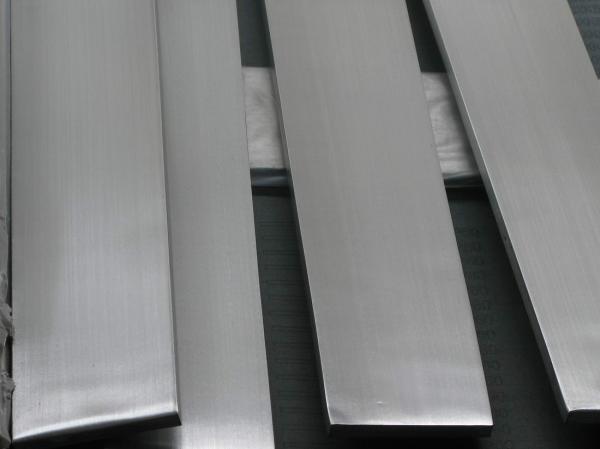

- Q:Are stainless steel pipes suitable for cryogenic applications?
- Stainless steel pipes are indeed suitable for cryogenic applications due to their exceptional low-temperature properties. This material proves to be an ideal choice when dealing with extremely cold temperatures in cryogenic applications. Its impressive strength, outstanding resistance to corrosion, and commendable thermal conductivity are all crucial factors when handling cryogenic fluids or gases. The structural integrity and durability of stainless steel pipes remain intact even under the harshest cold conditions, avoiding any brittleness. Moreover, the ability of stainless steel to resist expansion and contraction ensures consistent and dependable performance in cryogenic environments. Hence, it is no wonder that stainless steel pipes have gained popularity in various industries like aerospace, medical, and energy where cryogenic applications are commonly encountered.
- Q:What is the difference between 304H and 304 stainless steel pipes?
- The carbon content is what sets 304H stainless steel pipes apart from 304. Although both grades belong to the 304 stainless steel alloy, 304H has a higher carbon content than 304. This increased carbon content gives 304H pipes the ability to withstand higher temperatures, as they possess better strength and resistance against sensitization. Conversely, 304 stainless steel pipes are better suited for general applications due to their good corrosion resistance and widespread use in various industries. Consequently, when deciding between 304H and 304 stainless steel pipes, it is important to consider the specific requirements of the application, including the operating temperature and the need for enhanced strength and resistance against sensitization.
- Q:How do you calculate the flow rate of stainless steel pipes?
- There are two equations that can be used to calculate the flow rate of stainless steel pipes. These equations are the Hazen-Williams equation and the Darcy-Weisbach equation. The Hazen-Williams equation is commonly used in commercial and industrial applications for water flow, while the Darcy-Weisbach equation is more general and can be used for different fluids. To calculate the flow rate using the Hazen-Williams equation, you can use the formula Q = 0.849 * C * (D^2.63) * (h^0.54). In this equation, Q represents the flow rate in gallons per minute (GPM), C represents the Hazen-Williams coefficient (which depends on the pipe material and condition), D represents the inside diameter of the pipe in inches, and h represents the head loss or pressure drop in feet. For the Darcy-Weisbach equation, the flow rate can be calculated using the formula Q = (π/4) * (D^2) * V. In this equation, Q represents the flow rate in cubic meters per second (m³/s), D represents the inside diameter of the pipe in meters, and V represents the velocity of the fluid in meters per second (m/s). To determine the velocity (V), you can use the formula V = Q / ((π/4) * (D^2)). It is important to note that these equations provide theoretical estimations of the flow rate and other factors such as pipe roughness, fluid viscosity, and system pressure can also affect the actual flow rate. Therefore, it is recommended to consult engineering standards, industry guidelines, or work with a qualified engineer for accurate calculations.
- Q:Stainless steel tube, also known as why tube?
- Use can be divided into oil well pipe (casing, tubing and drill pipe etc.), line pipe, boiler tube, mechanical structure, hydraulic prop pipe pipe, cylinder pipe, geological pipe, chemical pipe (high pressure fertilizer pipe, oil cracking tube) and shipbuilding pipe etc.
- Q:Why can't stainless steel be put together with carbon steel tube?
- Electrolyte: the contact area of two metals is covered with electrolyte or submerged. The iron in the carbon tube loses electrons to form ions into the solution, and the electrons on the surface of the stainless steel tubes are taken away by the corrosive agents in the electrolyte (such as oxygen in the air). Electrolytes become ionic channels.
- Q:How do you calculate the flow velocity in stainless steel pipes?
- In order to determine the flow velocity in stainless steel pipes, one must take into account multiple factors. Firstly, it is necessary to be acquainted with the flow rate or volumetric flow rate (Q) of the fluid that passes through the pipe. This can be ascertained by measuring the volume of fluid that traverses the pipe within a given time period. Subsequently, the cross-sectional area (A) of the pipe needs to be determined. For circular pipes, this can be computed using the formula A = πr², where r denotes the radius of the pipe. Once both the flow rate (Q) and cross-sectional area (A) are known, the flow velocity (V) can be calculated using the formula V = Q / A. It is worth noting that the flow velocity may undergo variations along the length of the pipe due to factors such as friction and changes in pipe diameter. In such instances, more advanced calculations or simulations may be required to accurately ascertain the flow velocity at specific points within the pipe. Furthermore, it is crucial to take into consideration the properties of the fluid being transported, such as viscosity and density, as they can also impact the flow velocity.
- Q:What is the difference between 304J2 and 316J2 stainless steel pipes?
- The main difference between 304J2 and 316J2 stainless steel pipes lies in their chemical composition. While both alloys contain the base elements iron and carbon, 304J2 stainless steel pipes have a higher concentration of chromium and nickel, while 316J2 stainless steel pipes have a higher concentration of chromium, nickel, and molybdenum. This makes 316J2 stainless steel pipes more resistant to corrosion, especially in environments with chloride ions, such as saltwater or marine applications. Additionally, 316J2 stainless steel pipes have better heat resistance and are more suitable for high-temperature applications.
- Q:Can stainless steel pipes be used for cryogenic storage tanks?
- Yes, stainless steel pipes can be used for cryogenic storage tanks. Stainless steel is known for its high strength, corrosion resistance, and low thermal conductivity, making it suitable for handling extremely low temperatures required for cryogenic storage.
- Q:Can stainless steel pipes be used for pharmaceutical cleanrooms?
- Yes, stainless steel pipes can be used for pharmaceutical cleanrooms. Stainless steel is a preferred material in pharmaceutical cleanrooms due to its excellent corrosion resistance, durability, and ease of cleaning. It meets the stringent requirements for clean and sterile environments and can withstand the harsh cleaning agents used in pharmaceutical facilities.
- Q:What is the difference between Type 304L and Type 316L stainless steel pipes?
- Type 304L stainless steel pipes contain a lower carbon content compared to Type 316L stainless steel pipes, resulting in improved corrosion resistance in mildly corrosive environments. On the other hand, Type 316L stainless steel pipes have higher levels of nickel and molybdenum, making them more resistant to corrosion in harsher environments, such as marine or chemical applications.
1. Manufacturer Overview |
|
|---|---|
| Location | Hebei,China |
| Year Established | 2009 |
| Annual Output Value | Above US$1 million |
| Main Markets | Asia, Middle East,America |
| Company Certifications | CE, CCC, ISO90001 |
2. Manufacturer Certificates |
|
|---|---|
| a) Certification Name | |
| Range | |
| Reference | |
| Validity Period | |
3. Manufacturer Capability |
|
|---|---|
| a)Trade Capacity | |
| Nearest Port | Tianjin |
| Export Percentage | 0.3 |
| No.of Employees in Trade Department | 4 People |
| Language Spoken: | English;Chinese |
| b)Factory Information | |
| Factory Size: | Above 5,000 square meters |
| No. of Production Lines | 3 |
| Contract Manufacturing | OEM Service Offered;Design Service Offered |
| Product Price Range | Lower |
Send your message to us
Stainless Steel Flats
- Loading Port:
- Shanghai Port or Others
- Payment Terms:
- TT or LC
- Min Order Qty:
- 5 Tons m.t.
- Supply Capability:
- 1000 Tons Per Month m.t./month
OKorder Service Pledge
OKorder Financial Service
Similar products
New products
Hot products
Hot Searches
Related keywords
